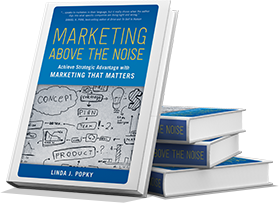The High Cost of Unresolved Dissonance
Author: Linda J. Popky
Newtown, Aurora, San Bernadino, Orlando, Dallas.
Trayvon Martin, Michael Brown, Sandra Bland, Alton Sterling, Philando Castile.
It seems every time you turn around we hear of yet another incident of violence. Some of this is terrorism, but not all of it. Some is from individuals with access to automatic weapons and a grudge. Some comes from an ongoing discord between law enforcement and members of the communities they are sworn to protect.
Does it feel like we are stuck playing the same bad song over and over again, without any forward movement?
As a musician, I often use musical references in the business world. I talk about being heard above the noise, bringing out the melody, harmonizing with other functions in an organization, amplifying your reach, and orchestrating a masterful performance.
In this case, what we’re seeing more and more often is dissonance—the tension or clash that results from combining disharmonious or unsuitable elements.
Not all dissonance is bad. In fact, without a little bit of dissonance, life gets pretty darn dull. In music, an unexpected chord or cadence catches our ear and makes us stop and listen. In life, we need that pull of something not feeling right to drive us to take action. Just like a lobster needs to shed its shell to be able to grow into a new one, we need to be put into uncomfortable or dissonant situations in order to maintain our own personal growth.
Dissonance teaches us to take action so that an undesirable result does not continue to occur.
Whenever there’s a disaster—whether an earthquake or tsunami or plane crash—a team of experts comes in to determine what happened, what went wrong, and what needs to change to avoid this disaster again. No one is happy about a tragedy, but we learn from them and make changes.
When it became apparent that cigarette smoking was causing hundreds of thousands of deaths each year, anti-smoking campaigns were developed to dramatically drive down the smoking rate, create smoke-free zones, and save untold numbers of lives from lung cancer.
Not that long ago, seat belts were an optional feature in cars—considered either a luxury or a burden. But the dissonance of hundreds of thousands of avoidable deaths in car crashes was resolved when seat belt use became mandatory.
The problem is when dissonance doesn’t resolve—when it’s left open and raw.
Dissonance never occurs with a single note—any note by itself sounds fine. It’s only when you add a second note that doesn’t combine well with the first that you create dissonance, and when neither note changes, the dissonance continues unabated. Today, it seems we’re stuck on the issues of gun violence and race relations with local police forces. Why? Perhaps because in today’s society, finding a way to harmonize with the other side is considered failure, so each side holds their position longer and longer.
When you combine the easy access to automatic weapons (especially by people who can’t be trusted to use them responsibly), the glamorization of active shooters by the media, and the belief by some that the 2nd amendment right to bear arms is absolute—you have dissonance, and ongoing mass shootings.
When you combine a distrust of the police by many minorities, the feeling that encounters with individuals from those groups put officers in danger, and law enforcement training to shoot first and ask questions later—you have dissonance…and the continued deaths of unarmed Black men and women.
Dissonance will be resolved, when those who are holding opposite positions move towards a more consonant, or harmonious position.
Repeating the same notes just makes us all crazy. We’re tired of being stuck and hearing the same unsettling tune. But here’s the secret. Resolving dissonance requires movement. At least one note, one voice, needs to move. It’s even better if there’s movement on both sides. Unfortunately, we are so stuck in our positions right now—so focused on proving that we are right—that we often refuse to move, to compromise, to come together. To resolve.
The impact on American business is enormous.
As businesspeople, we can’t avoid what’s going on around us. Our customers and our employees live in this increasingly dissonant world. We can either put our hands over our ears and try to ignore the bad sounds—even as they get louder and louder—or we can take action to resolve the dissonance.
Companies like Salesforce and PayPal have taken action on LGBT rights. Walmart, eBay and Amazon stopped selling Confederate flags in their stores. The CVS chain gave up $2 billion in revenue per year when it stopped selling cigarettes and other tobacco products.
Each of these brands got stronger, not weaker, because of their activism. They showed their constituencies—customers, employees, suppliers, communities—that they cared enough to take strong positions. They were willing to take action and get resolution.
How and where do you get involved? That’s something that each organization needs to determine for itself. We certainly seem to have more than enough dissonance to go around right now. Even starting a conversation creates movement, and movement resolves dissonance.
Find the place where your organization can help drive positive change and do it now. The cost of unresolved dissonance is just too high.




